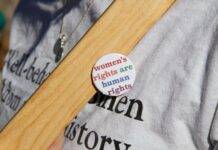Respelling the three L’s: Language, Literature and Languish
Language is the heartbeat of civilization and its achievements are credited to the development of language. However, a careful and deep study of the genealogy of language and its semantics reveals the inherent power relations, hierarchies and forms of control embedded in cultural practices. Let us explore how these have been understood across cultures and contexts.
Ananya Pathak is the feature editor, The New Leam
The society that we live in is male dominated not only due to the perception of men but also because women believe in it. Perhaps, the reason why women so readily believe in this conception lies in our socialization and upbringing as this is an important agent for forming our worldviews and orientations towards the world. It is these perceptions that are to be held responsible for gender inequality in the traditional society. Today, with the spread of education, enhanced exposure to women and increased interaction with the world at large, the traditional roles ascribed to men and women are changing fast. Today we see many women stepping outdoors and contributing to the economy. However what is most evident is that women are slowly learning to strike a balance between the traditional role of a caretaker and the new role of the breadwinner. Literature too has a great role to play in the way that a society perceives the roles of men and women. Similarly, literature written in the society reflects the thinking patters regarding societal roles of males and females. Moreover these are also reflections of the prevailing attitudes towards these. When one does a careful study of literature an interesting observation can be arrived at. This is that generally there is interesting diversity and versatility in the roles played by men but there is largely a standardised/stable approach with which women’s roles are created. Another interesting observation is that stereotypical roles of women have been opted for in the works of women scholars also. Any diversion from these stereotypes has been seen as an exception or as an alternative to the mainstream. When we talk about literature and its relation with the question of gender, we must also talk about another major tool of socialization called language. As soon as the child is able to learn language, he or she begins to interact with elders and gain and process knowledge and ideas. The absorption of these ideas and knowledge of the elders that surround the child is often laced with many gendered connotations. Language thus plays a very important role in constructing the ideas of an individual and acquiring the gendered roles. The use of simple day to day words and phrases that are taken for granted may often reinforce a particular idea among individuals and much often it may become difficult to break free from it and form a new way of looking at the world. It would not be difficult to understand that the values, beliefs and ideas learnt in a particular society are perpetuated by the language spoken in that particular society. From folktales and fairytales to rhymes and poems often many of these literary creations have tinges of this gendered approach to society, the images of women as portrayed by these tools of learning are often so stereotypical that they offer little or no escape to visualise the gendered roles creatively. The inadequacy of expression about women is visible through the use of language. There is moreover also the absence of a female centric usage of language and this influences literacy and cinematic creations at many important levels of production.
Feminists have found many examples to illustrate how language can be gendered in very subtle as well as manifest ways. There has also been much debate on how language which is actually meant to be a tool of communication can end up becoming a tool of oppression. There is much misrepresentation of women in literary works and the use of biased language further generates stereotypes that are tough to be able to break. I would like to here make the point with a few illustrations of proverbs used in different countries (here translated in English) which show how universally women have been oppressed/ misrepresented through language.
- ‘Many women, many words, many geese, many ‘turds’( England)
- ‘Three women make a market’( Sudan)
- ‘ A woman’s tongue spreads gossip fast’( China)
- ‘The tongue is babbling and the head knows nothing about it’.
It will be interesting to observe here that in the English language all people ate understood to be ‘male’ until proven female. Here I am suggesting three sentences (assumptions) used in our day to day life-
-While a discussion is held about the problems of common people in a country, a reference is made to the ‘common man’
- While addressing a letter to the senior most official in a company/organisation people generally write Mr/ Sir
Is it not interesrting and insightful to note that the Encyclopaedia states that ‘man is the highest form of life on earth’ and that ‘his superior intelligence has enabled man to achieve things impossible for other animals’. The child will surely understand the gendered connotations and fail to see the term ‘man’ in a neutral sense.
The situation depicted above is surely one that deserves our attention not only to language as an academic discipline but also to the everyday use of language and how we as individuals utilise it.
Gradually we are moving towards a more egalitarian usage of language and this sensitivity can be seen in the emergence of new kind of literature and media interventions. We must realise that as a society we have been nourished by gender stereotypes for a long time and therefore to break free will consume a lot of time. The challenge is indeed enormous. Yet it is wonderful to see many sensitive individuals come up with films which look at women not merely as glam dolls but strong individuals, publication of magazine and journals, songs and pieces of art that allow women and men to discover themselves beyond stereotypes are also coming up with the onset of this change. The wind of transformation has only just begun and hopefully a time will come when we are able to allow both men and women to live as humans first and not as gendered and therefore perpetually doomed stereotypes. It is high time we realised that the beauty of human agency lies in its unpredictability and its ability to transcend fixed roles and categories, society must therefore allow the love and nurturance to each individual to discover themselves to their highest human potential without being fragmented. We surely have come a long way but there is still a long path ahead of us…
References
- Bucholtz, Mary (2004) [1975], “Editor’s introduction”, in Lakoff, Robin (author); Bucholtz, Mary (editor), Language and woman’s place: text and commentaries, New York: Oxford University Press,ISBN 9780195167573.
- Tannen, Deborah (1990). You Just Don’t Understand: Women and Men in Conversation. New York: Harper Collins.
- Lakoff, Robin (2004) [1975]. Language and woman’s place: text and commentaries. New York: Oxford University Press. ISBN 9780195167573.
- Wolfram, Walt; Natalie Schilling-Estes (2006). American English: Dialects and Variation. Wiley-Blackwell.
- Fitzpatrick, M. A.; Mulac, A.; Dindia, K. (1995). “Gender-preferential language use in spouse and stranger interaction”. Journal of Language and Social Psychology.
- Jespersen, Otto (1922), Language, its Nature, Development, and Origin, H. Holt.
- O’Barr, William and Bowman Atkins. (1980) “‘Women’s Language’ or ‘powerless language’?” In McConnell-Ginet et al. (eds) Women and languages in Literature and Society. 93-110. New York: Praeger.
- Attenborough, Frederick(2014). “Words, contexts, politics”. Gender and Language, special issue: Gender, language and the media. Equinox.
- Coates, Jennifer (1986). Women, Men and Language: A Sociolinguistic Account of Gender Differences in Language. London: Longman.
- Kira and Mary Bucholtz (eds.). (1995). Gender Articulated: Language and the Socially Constructed Self. New York: Routledge.
Cover Image Source : Oxford Dictionaries Blog
The New Leam has no external source of funding. For retaining its uniqueness, its high quality, its distinctive philosophy we wish to reduce the degree of dependence on corporate funding. We believe that if individuals like you come forward and SUPPORT THIS ENDEAVOR can make the magazine self-reliant in a very innovative way.














